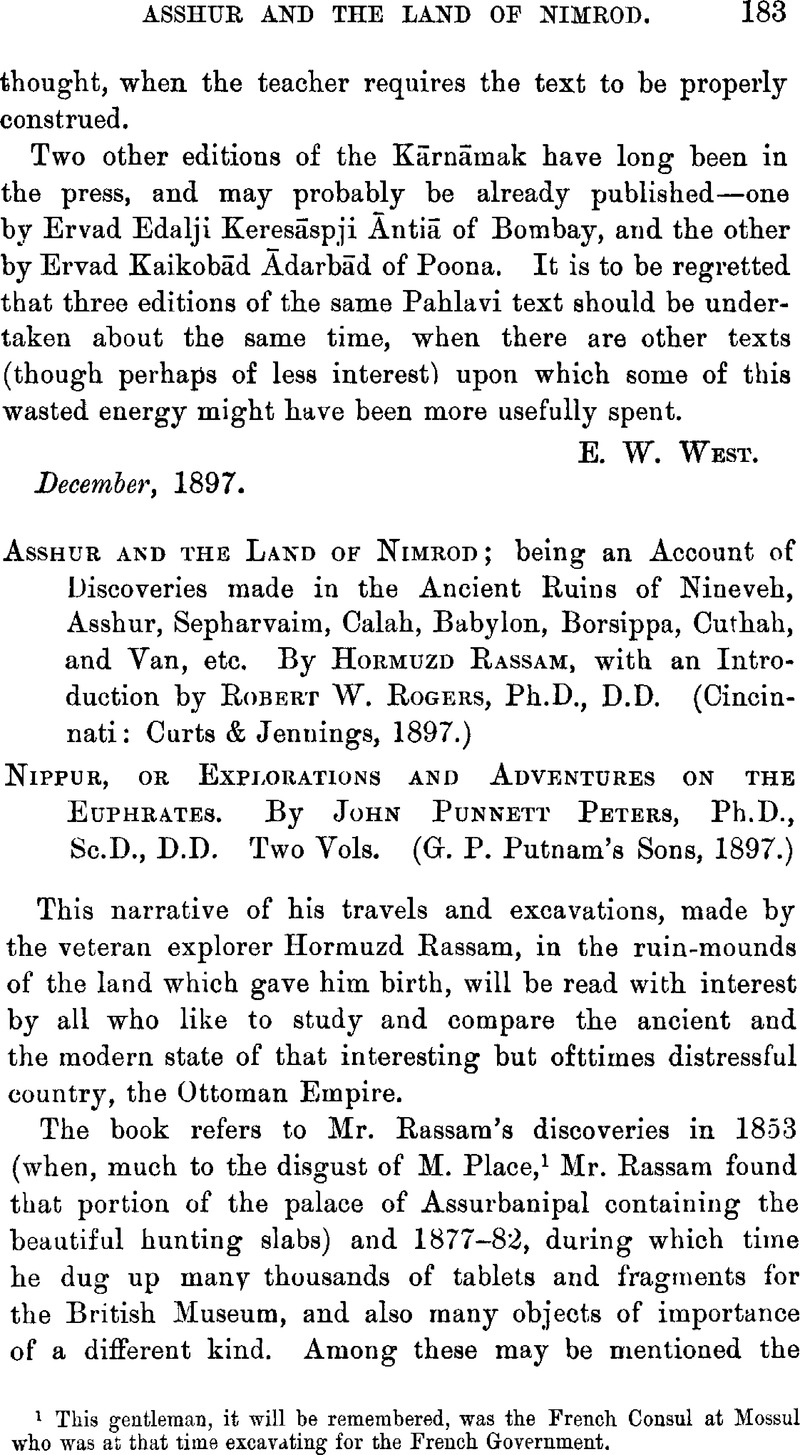No CrossRef data available.
Published online by Cambridge University Press: 15 March 2011

page 183 note 1 This gentleman, it will be remembered, was the French Consul at Mossul who was at that time excavating for the French Government.
page 184 note 1 Schrader, , “Cuneiform Inscriptions and the Old Testament,” vol. iGoogle Scholar, last page.
page 184 note 2 See J.R.A.S. for 1891, Art. VIII.
page 184 note 3 In the Palace of Assurbanipal, it is worthy of note, Mr. Rassam found many fragments of the so-called creation-story (the legend of Bel and the Dragon) and the Gilgamesh series, the eleventh tablet of which contains the story of the Flood, translated by Mr. G. Smith.
page 188 note 1 This I indicated as a possible reading as early as 1882 (“Guide to the Kouyunjik Gallery,” p. 7, note 1).